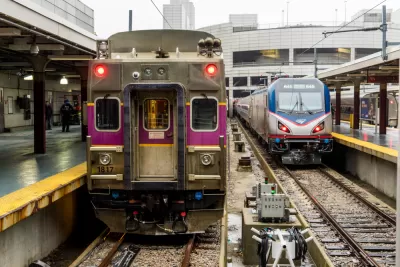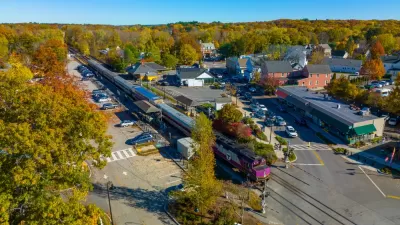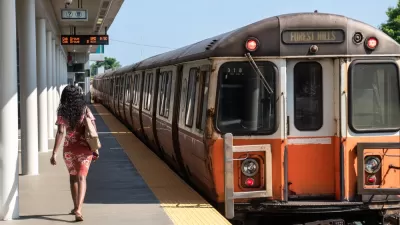Cities with commuter rail stops will have to accommodate higher-density housing or risk losing access to state resources and housing grants.

Massachusetts' latest economic development bill includes a rule that requires municipalities served by Massachusetts Bay Transportation Authority (MBTA) commuter trains to permit denser housing in at least one district within a half mile of a station. The measure is meant to create more housing near transit stations and alleviate greater Boston's growing housing crisis, according to an article Tim Logan. "The biggest barrier to building in Massachusetts is zoning and the lack of zoning for multifamily housing. People want walkable neighborhoods, and this will help us produce them," said Rachel Heller, CEO of the advocacy group Citizens Housing and Planning Association, in the article.
Some cities along the MBTA's rail lines with little or no land zoned for higher density protested the measure, insisting that local zoning decisions should stay in local hands. "Mandates from Beacon Hill are no way to build," said Massachusetts Municipal Association executive director Geoff Beckwith, adding: "New laws won’t work if they strip average citizens of their role and voice." State Senator Joe Boncore argues that the rule is a fair trade for access to state infrastructure and grants: "Suburban towns benefit from being on the regional transportation network, he said, so they should contribute to tackling the regional housing shortage."
The new rule is part of a package that includes "Housing Choice," another proposal aimed at reducing barriers to building denser housing by reducing the percent of votes needed to pass zoning changes.
FULL STORY: New law would require high density housing near T stations

Study: Maui’s Plan to Convert Vacation Rentals to Long-Term Housing Could Cause Nearly $1 Billion Economic Loss
The plan would reduce visitor accommodation by 25,% resulting in 1,900 jobs lost.

North Texas Transit Leaders Tout Benefits of TOD for Growing Region
At a summit focused on transit-oriented development, policymakers discussed how North Texas’ expanded light rail system can serve as a tool for economic growth.

Why Should We Subsidize Public Transportation?
Many public transit agencies face financial stress due to rising costs, declining fare revenue, and declining subsidies. Transit advocates must provide a strong business case for increasing public transit funding.

How to Make US Trains Faster
Changes to boarding platforms and a switch to electric trains could improve U.S. passenger rail service without the added cost of high-speed rail.

Columbia’s Revitalized ‘Loop’ Is a Hub for Local Entrepreneurs
A focus on small businesses is helping a commercial corridor in Columbia, Missouri thrive.

Invasive Insect Threatens Minnesota’s Ash Forests
The Emerald Ash Borer is a rapidly spreading invasive pest threatening Minnesota’s ash trees, and homeowners are encouraged to plant diverse replacement species, avoid moving ash firewood, and monitor for signs of infestation.
Urban Design for Planners 1: Software Tools
This six-course series explores essential urban design concepts using open source software and equips planners with the tools they need to participate fully in the urban design process.
Planning for Universal Design
Learn the tools for implementing Universal Design in planning regulations.
Ascent Environmental
Borough of Carlisle
Institute for Housing and Urban Development Studies (IHS)
City of Grandview
Harvard GSD Executive Education
Toledo-Lucas County Plan Commissions
Salt Lake City
NYU Wagner Graduate School of Public Service





























